Lp of low density is increased. LDL cholesterol is elevated: what does it mean and how to reduce it? Decrease in HDL concentration
Cholesterol is a substance that every cell of the body needs. It is contained in cell membranes. Cholesterol is not found in the blood serum on its own, but forms a single complex with proteins that carry it. Such compounds are called lipoproteins.
Role of cholesterol
Cholesterol performs a very important function for the body:
total cholesterol: general analysis cholesterol in the body, excluding fractions. The diagnosis of cardiovascular risk is made by a doctor who evaluates the value in excess of cholesterol and fractions, also takes into account genetics, family history and all associated risk factors in order to close the diagnosis and determine behavior.
Non-drug treatment for the control of hypercholesterolemia is drastic, encouraging healthy eating, physical activity and distancing risk factors such as obesity, type 2 diabetes, hypertension, alcohol consumption and smoking. Prevention is still the best medicine. A wrong, lifelong, individually inadequate diet can lead you to create your own disease.
- it is one of the important components of cell membranes, it is responsible for their permeability;
- serves as a precursor for the formation of steroid hormones (androgens, estrogens, corticosterone, cortisol, etc.);
- with its participation, the synthesis of bile acids is carried out.
Total cholesterol has no prognostic value in determining the possible risk of developing coronary and other heart diseases, but its increased value indicates the need for a detailed study of lipoprotein metabolism.
Why are lipids useful?
Our health depends more on what we eat and our lifestyle than on our genetic heritage. Our body does not work by magic, and when swallowed nutrients to be consumed in small doses throughout the day and in a variety of ways. That's right, firstly, we must think that our body must "work" and for this, tune in between all organs, always considering the intestines, kidneys, liver and others, so that the heart can work correctly.
Because chronic low-grade inflammation is so important, foods should be rich in anti-inflammatory foods and also not include foods that do the opposite. This is a politically correct speech, but without the necessary specifics. Dietary cholesterol has little effect on cardiovascular mortality. It is important to consume saturated fat in small amounts, drastically reduce vegetable oils, eliminate trans fats completely, and avoid foods with excess refined carbohydrates such as bread, cakes, and sweets, and avoid mostly soft drinks, artificial juices, and sweeteners or concentrates. .
Types of lipoproteins
Several types of lipoproteins are known, but only two of the most important of them are distinguished:
- LDL - low density.
- HDL - high density.
The role of each of them is strictly defined and directly opposite in the mechanism of disorders (HDL and LDL cholesterol), the norm of these indicators, respectively, is up to 1.05 mmol / l and 4.5 mmol / l. In addition, triglycerides also belong to the cholesterol fractions. All these components are determined in a study called lipidogram. This biochemical analysis determines the quantitative content of total cholesterol, LDL, HDL and triglycerides.
In addition to fruits and herbs rich in vitamins, minerals, phytochemicals and fiber, which are essential, and also include lean meats, omega-3 rich fish, olive oil. extra virgin olive oil with less than 0.5% acid. More details must be confirmed by a nutritionist for individual adjustments.
Lifestyle changes are what have shown the effectiveness of the treatment of cardiovascular diseases, and in fact it should be in front of your head. Cholesterol is a hot topic. This says a lot about the problem - after all, 60% of the population suffers from excess cholesterol in the blood.
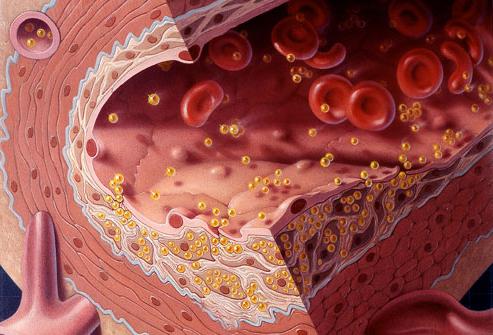
LDL is the "bad" cholesterol, and elevated levels may indicate an increased risk of developing cardiovascular disease. HDL, on the contrary, acts as a protective factor against the occurrence of atherosclerosis.
HDL cholesterol
HDL cholesterol values below 1.03 mmol/l may indicate a serious risk of developing coronary disease heart and atherosclerosis, regardless of the concentration of total cholesterol. These indicators are indicators of early detection of such risks, and are also used to evaluate the effect of treatment aimed at lowering blood lipids.
What is cholesterol, where and from what consequences?
Before we get closer to healthier preventive habits, it's important to understand what cholesterol is and know its implications. Cholesterol is a necessary substance for the vital functions of our body. Cholesterol can have two origins.
The other part comes from food mainly from animal products. An essential part is our body, which produces, essentially, the liver. . Cholesterol can be divided into two types. The so-called "good cholesterol", responsible for cleaning the arteries; "Bad cholesterol", which has the opposite effect, sticks to the walls of arteries. For its proper functioning, the body requires only a small part of cholesterol, leaving the rest in the arterial walls. This leads to a decrease in the size of the blood vessels, which will interfere with the circulation of blood and its abundance to various organs, which can cause.
HDL values equal to 1.55 mmol / l or more, on the contrary, indicate that the risk factor for the development of cardiovascular diseases is negative or reduced to zero.
Approximately 25% of total cholesterol is transported in the HDL fraction.
LDL cholesterol
LDL plays a major role in the development of heart disease and may indicate hereditary hyperlipidemia. This has been proven as a result of numerous epidemiological and clinical studies, which also demonstrate its atherogenic properties. If LDL cholesterol is elevated in combination with triglycerides, then this combination may indicate an increased risk of developing atherosclerosis. This combination enables early diagnosis of this disease. The results of these studies allow us to evaluate the effectiveness of therapy, which is aimed at lowering the content of lipids in the blood serum.
Angina: This happens when oxygenated blood doesn't get the right amount of heart muscle, causing chest pain. Myocardial infarction: This occurs when the obstruction of the coronary artery is completed. . To maintain blood cholesterol levels, there are healthy habits that we should all put into practice. Bet on these 6 tips and feel the difference.
Risk Factors for LDL Formation
Excessive consumption saturated fat raises the level of cholesterol in the blood. Avoid animal fats found in foods such as cheese, butter, cold cuts, ham, and fatty meats, especially red meat. Also avoid low-fat dairy products.
If LDL cholesterol is low, it may be due to malnutrition or malabsorption.
Approximately 70% of the total cholesterol structure is occupied by LDL.
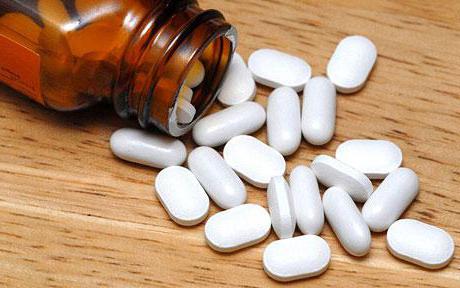
LDL cholesterol is elevated. Why is it dangerous?
In simple terms, "bad" cholesterol (LDL) is a molecule that can oxidize and penetrate into blood vessels, forming on their inner side atherosclerotic plaques. They significantly impede the flow of blood and can even completely block the lumen of the blood vessel and form a blood clot. This may lead to the development acute infarction myocardium.
Fiber-rich foods help crowd out bad cholesterol: brown rice, nuts, sprouts, and vegetables. Blue fish, such as sardines or salmon, contain omega-3 fatty acids that help regulate cholesterol levels, so eating them two to three times a week is recommended.
In addition, it helps regulate weight and control stress, diabetes and arterial pressure, all of which are risk factors for cardiovascular disease. Being overweight raises your cholesterol. By losing weight, you will increase your "good" cholesterol and decrease your "bad" cholesterol.
The formation of such a blood clot in a vessel supplying blood to the brain can provoke a stroke.
Due to the fact that the lumen of the vessels narrows, the blood, saturated with oxygen, enters the heart muscle in insufficient quantities. This provokes the development of ischemic and other heart diseases. In addition, the walls of the vessels, on which atherosclerotic plaques are concentrated, lose their elasticity. If LDL cholesterol is elevated, it strikes both the heart and blood vessels.
Regularly monitor cholesterol levels
In addition to all the diseases that are often associated with tobacco, there is also the fact that it reduces the body's "good cholesterol". It is important to periodically monitor the level of cholesterol in the blood when we are talking about a silent enemy.
Reduced levels of stress and anxiety
Try to participate in activities that bring you satisfaction for at least an hour a day. Exercise can be an option: go for a walk, play a group sport with friends, or join a group if you like. gym.LDL cholesterol: the norm in women and men
Consider normal LDL cholesterol values.
The table below shows how, depending on age and gender, one of the main lipidogram fractions, LDL cholesterol, changes. The norm in women is slightly different from the male. This is due to differences in the hormonal background of representatives of different sexes. Normal LDL values in men aged 20 to 60 are slightly higher than in the fair half. However, at a more mature age, everything changes, and LDL cholesterol (the norm) in women catches up with men's indicators and even becomes slightly higher. This is the effect of the lack of female hormones in the menopause.
With these healthy methods, you not only lower your blood cholesterol, but also protect your body from other risk factors. If you have any questions or have any information to add, we invite you to leave a comment. This blog thought about your participation!
To learn more about health and wellness, subscribe to our blog. We will be happy to share relevant information with you and useful tips for your Everyday life. Cheese may not be as bad for body fat levels as many people imagine. Also, higher food intake was not associated with higher cholesterol levels. In fact, participants who preferred low-fat dairy products tended to have higher levels of low-density lipoprotein cholesterol, which was considered bad cholesterol.
Regional affiliation can also influence its level. So, for example, the concentration of cholesterol in the inhabitants of India and Pakistan is somewhat higher than in other ethnic groups.
Causes of an increase in LDL levels
Several factors can influence the increase in LDL cholesterol:
- alimentary factors - irrational nutrition;
- insufficiently mobile lifestyle;
- violation of metabolic processes - overweight;
- smoking;
- alcohol abuse;
- endocrine diseases - diabetes, hypothyroidism;
- hypertension;
- liver disease;
- hereditary hyperlipoproteinemia.
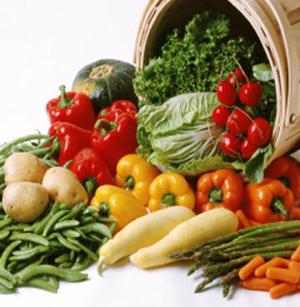
Causes and signs of increased LDL levels in the blood
The study came to reinforce further research that already suggested that the fat present in cheese does not cause bad cholesterol due to the unique set of ingredients it contains. One possible explanation for the beneficial effects of cheese is that the fats in this food, such as conjugated linoleic acid and vaccine and oleic acid, have a cardioprotective effect - they block part of the formation of cholesterol and triglycerides in the liver. They are contrary to current health guidelines, which advocate cutting down on the saturated fat present in cheese to keep cholesterol levels healthy.
How to determine the level of LDL?
To determine the level of cholesterol, it is enough to donate blood from a vein in any clinic. You will need a referral from your doctor for an LDL cholesterol test. It can be obtained at an appointment with a general practitioner, cardiologist, surgeon or in a pre-medical office.
Blood for the analysis of LDL cholesterol is taken in the morning on an empty stomach. On the eve, it is advisable not to eat fatty foods, and dinner should be no later than 19.00. Otherwise, the true indicators of cholesterol may be somewhat distorted.
Cholesterol is transported in the blood associated with low or high density lipoproteins. When there is too much low-density lipoprotein in the blood, it sticks to the walls of arteries and blocks blood flow. The higher these levels, the greater the risk of heart attack and stroke.
The Importance of Physical Activity
However, for Daniel Magnoni, a nutritionist at the Heart Hospital in São Paulo, the issue goes far beyond food. "Only 20% of cholesterol comes from food, 80% comes from the liver." Physical activity practice and other factors such as fruit and vegetable intake are essential in order to control cholesterol production. Bad cholesterol is the key and the liver receptor is the lock. Saturated fat occupies this lock, increasing the risks, the doctor explains.
The result of the analysis can be obtained the next day. If it turns out that LDL cholesterol is elevated, the doctor will prescribe treatment. With total cholesterol levels of more than 10 mmol / l and a high LDL fraction, hospitalization in the cardiology department may be offered or outpatient treatment may be prescribed. Most likely, statins will be recommended. If LDL cholesterol is elevated, as well as total, and non-drug methods do not help, then taking statins can be prescribed for life.
What does low cholesterol mean?
What will be the relationship between cholesterol and heart disease? If you read this exercise carefully, you will understand that cholesterol is mainly produced by the body, and only 25% comes from food. Note that if cholesterol comes from the body's natural process, it reacts by regulating vital functions such as metabolism as well as hormones - won't it do us any harm? It was commonly referred to as cholesterol for "good and bad" cholesterol. However, it is incorrect to say that "total" cholesterol causes cardiovascular disease.
Lowering cholesterol levels without drugs
Before starting with medicines, you need to try to do it with special diet and physical activity. How to lower LDL cholesterol without pills? Regular moderate physical activity will help in solving this issue. It is not necessary to go to the gym and train hard there. If there are no diseases of the cardiovascular system, you can do small 30-minute runs in your free time, but you need to monitor your pulse. It should not be higher than usual by more than 80%, that is, immediately after a run, a pulse of 100-140 beats per minute is the norm. And after 5-10 minutes it should return to its normal values - 60-80 beats per minute.
He even suggested that the use of statins would be unnecessary. The analysis included approximately 70,000 people and showed no association even in cases premature deaths people over 60 with cardiovascular disease. It was also possible to test that 92% of those with high cholesterol live longer.
In this context of cardiovascular disease, one of the major confounders is the association of these diseases with cholesterol and saturated fat animal origin. Years later, new research, and especially the article "Jam's Internal Medicine," overturned this theory and led to a major discussion of the main villain: sugar.
Sometimes jogging is contraindicated, in which case a 40-minute walk at a normal pace is an excellent solution.

diet to lower cholesterol
At the same time with physical activity you should change your taste preferences. This can be difficult to do, but after all, we are talking about health, so such a step is necessary.
We have cholesterol completely wrong. No association or inverse relationship between low-density lipoprotein cholesterol and mortality in the elderly: a systematic review. It's time to talk about triglycerides - a type of fat. Triglycerides and cholesterol are separate types of lipids that circulate in the blood. While the former is used to store unused calories and provide the body with energy, cholesterol is used to build cells and certain hormones.
Both cannot be dissolved in the blood, so they circulate throughout the body with the help of lipid-carrying proteins. They can be acquired through feeding or produced by the body itself in the liver. This increase in triglycerides is due to consumption of substances such as refined alcohol, flour and sugar, or excess fructose. Fructose converted to triglycerides can cause bad cholesterol.
Avoid all foods high in saturated fats from your diet. These include:
- all sausages;
- all meat semi-finished products;
- all pastries and muffins, cakes and cookies;
- fatty meats;
- salo;
- vegetable oil (except soybean, rapeseed and corn);
- cream and sour cream;
- mayonnaise;
- hard cheeses.
Fruits, fresh vegetables and freshly squeezed juices from them, on the contrary, are recommended to be included in your diet. Marine fish will also be useful, because it contains omega-3 fatty acids. Sardines and salmon are especially useful, but the fish should not be salted or fried. It is best to steam it or bake it in the oven.
Weak green tea also lowers cholesterol to some extent, since it contains flavonoids, they are able to strengthen the walls of blood vessels.
Some experts believe that drinking red wine in very small amounts can reduce bad cholesterol levels. Other scientists disagree with these data and say that alcohol, even in small doses, harms the body. Therefore, it is better to postpone such treatment until all experts come to a consensus.
It is well established that there are foods that, if eaten regularly, can lower cholesterol levels by 10%. These include:
- Nuts - they can interfere with the absorption of saturated fats by the body. But they should be consumed in limited quantities (no more than 10-12 pieces per day), because they are too high in calories.
- Cereals - oats, barley, as well as wild rice and bran contain fiber necessary for good digestion.
- Soy, more precisely the isoflavones it contains, is able to lower LDL cholesterol.
- Polyunsaturated vegetable oils (soybean, linseed, nut, rapeseed and corn) can be eaten with high cholesterol. These types of oils contain cholesterol-lowering properties. It is they who are recommended to season salads from fresh vegetables.
- Sea fish should be included in the menu at least 3 times a week.
- Any fruits and vegetables contain soluble fibers, they help to remove LDL cholesterol from the body. It is especially useful to include cabbage, carrots, citrus fruits, apples and apricots in the diet. Of the legumes, beans are especially useful.
- It is believed that garlic, especially in combination with lemon, is able to cleanse blood vessels. These two products are included in a large number folk recipes to cleanse blood vessels and lower cholesterol.
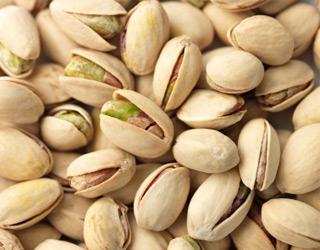
If LDL cholesterol is below normal, this condition does not require treatment. This can be the result of malnutrition and low-calorie diets. In this case, you should return to a balanced diet. This will be enough.
Medical treatment
As found out, an increase in LDL cholesterol plays a major role in the development of atherosclerosis. In order to prevent the formation of this disease and its complications, it is necessary to constantly monitor the level of this substance, especially if there is a predisposition to its increase. If LDL cholesterol is elevated, treatment should be carried out by a cardiologist.
If diet and exercise do not help to cope with high cholesterol levels, you should take the medicines prescribed by your doctor. It can be:
- statins;
- niacin (nicotinic acid);
- fibrates or salts of fibric acid, which lower triglyceride levels and increase HDL, respectively, lowering the "bad" fraction of cholesterol - LDL;
- bile acid sequestrants;
- cholesterol absorption inhibitors (drug "Ezetimibe");
- food supplements containing omega-3 fatty acids.
Statins
Statins should be discussed in more detail. They are chemicals that can reduce the production of enzymes. Without them, the synthesis of cholesterol in the body is impossible.
It is important to remember that you need to take statins separately from others. medicines that lower cholesterol, and they can not be combined with grapefruit juice. This is because grapefruit contains substances that can affect the liver enzyme responsible for the destruction of statins. Thus, the body accumulates an increased concentration of statins, more than necessary. This can lead to impaired liver function and destruction of muscle structure.
The most common types of statins in Russia are:
- The drug "Lovastatin" - is able to reduce cholesterol by 25%.
- Means "Fluvastatin" - lowers cholesterol by 29%.
- The drug "Simvastatin" - lowers cholesterol by 38%.
- Means "Atorvastatin" - is able to lower the concentration of cholesterol by 47%.
- The drug "Rozuvastatin" (its other name is "Mertenil") - the most effective of the widely known statins, reduces cholesterol by up to 55%.
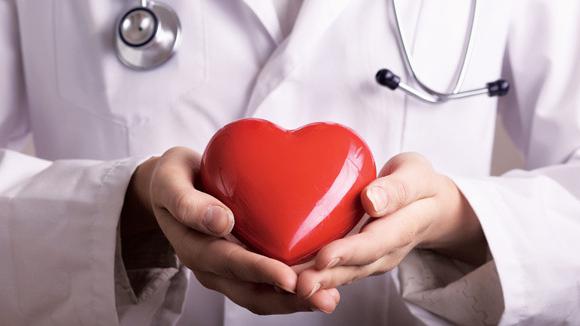
natural statins
In addition to medicines, there are many plants in nature that contain natural statins, but the concentration of these substances in plant materials is much lower than in medicinal ones. However, they can also be used for treatment.
- lemongrass;
- fenugreek;
- St. John's wort;
- hawthorn;
- Leuzea safflower;
- rhodiola rosea.
This herbal raw material can be used separately or mixed and prepared from it in water infusions in a water bath and taken with meals. This treatment is long, its duration can be up to 4-6 months or more.
Conclusion
If non-drug measures to combat cholesterol do not help, and its indicators are still high, then you should consult a doctor and follow his recommendations.
Not always a person delves into the data contained in the analysis. However, the normal functioning of the whole organism is possible only if all the target indicators are within the normal range. If, according to the results of the analysis, LDL is elevated, what does this mean? What is the rate of this indicator for men and women? How to restore the LDL level if it is low or high? Is it possible to avoid vascular stenting?
Recently, more and more can be heard about such a compound as cholesterol. And it is not always mentioned in a positive way. Actually this important component to form new cells. At the same time, for the normal course of processes in the body, it is important that this substance, or rather, its content, is always within the normal range.
What are low density lipoproteins (LDL)? These are protein compounds that are involved in the transport of cholesterol in the blood. They are formed as a result of metabolic processes in the liver. If LDL is elevated, it can lead to atherosclerosis and other problems, such as during surgery. In another way, this compound is also called bad or harmful cholesterol.
Lipoproteins can be either high or low density. Everyone's blood contains both forms of cholesterol, but the more high-density compounds, the better. In high density lipoproteins, most of the compound is made up of protein components. The lower the density, the less protein and more cholesterol. There are even very low density lipoproteins. There is practically no protein in their composition, and the main share is bad cholesterol.
Causes of an increase in LDL
In order to successfully lower the level, it is important to understand what led to the failure in the balance. Deviations from the norm usually show biochemical analysis. Some experts tend to single out only two main reasons due to which low density lipoproteins increase.
High rates may develop due to hereditary predisposition. On the other hand, deviations from the norm are often associated with the wrong diet, eating too fatty, fried foods, saturated with fast carbohydrates.
In fact, LDL levels can rise due to a variety of factors:
- after the transferred operation;
- due to a long unbalanced diet;
- during periods of pregnancy;
- due to smoking or alcoholism;
- after stenting;
- due to strong psycho-emotional stress and stressful situations;
- after diseases of the gallbladder, including if there are stones;
- cholestasis and extrahepatic jaundice can also affect the level of the indicator.
The human body is such an integral structure that even small problems can affect the targets. Needless to say, how much surgery, hormonal disruptions, oncological tumors or diabetes mellitus affect. Also, the uncontrolled use of drugs can have a negative impact.
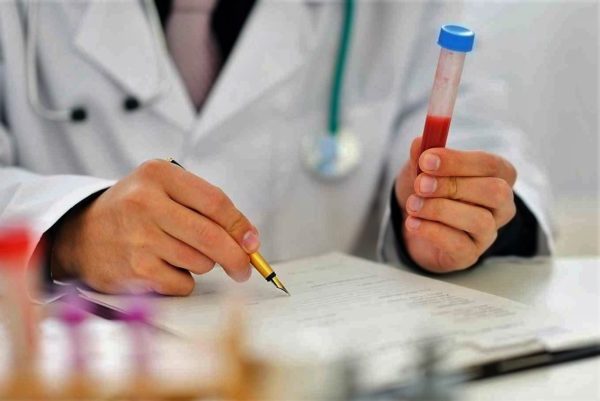
Is the result always reliable?
There are situations when the primary biochemical blood test showed that the indicators are reduced or increased. However, no other factors and symptoms are consistent with this. What would be the right thing to do?
Lowering cholesterol is slow, so you should not hope for an instant result. Success can be achieved faster if you follow a diet along with physical activity. It is advisable to exclude such foods from the diet:
- fat meat;
- all sausages;
- sweet pastries;
- salo;
- fatty cheese;
- butter;
- sour cream;
- mayonnaise.
At first glance, the diet is not too complicated, there are not many restrictions. However, it can help the body stabilize the lipid balance. A prudent approach to one's health helps to protect oneself from many problems and protect oneself from diseases.
Most people manage not to bring themselves to the operation of stenting, but to get rid of the disease at the initial stage. You should never neglect the recommendations of the attending physician, as well as the prescribed tests and conduct them in strict accordance with the rules. Early diagnosis is the key to success and light treatment!







